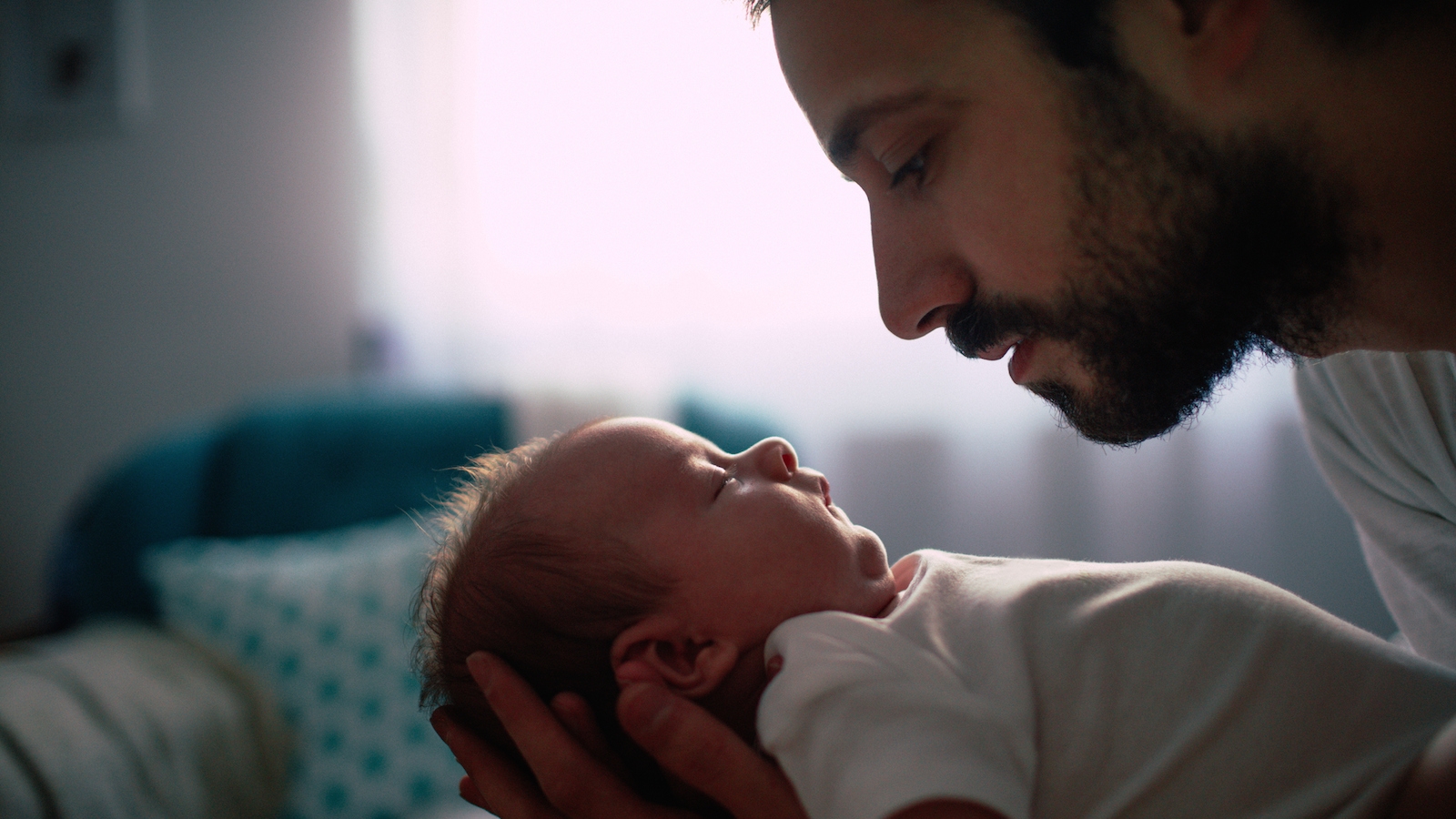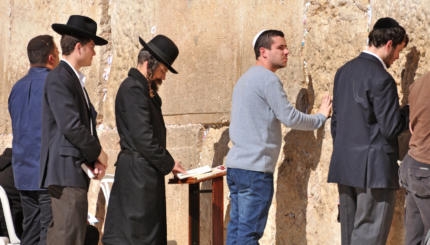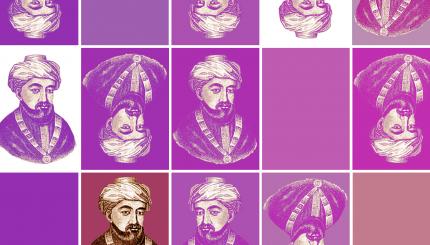On March 15, 1983, the Central Conference of American Rabbis (CCAR), the Reform movement’s body of rabbis, passed a resolution prepared by a committee on patrilineal descent entitled “The Status of Children of Mixed Marriages.” The CCAR resolution stated that “we face, today, an unprecedented situation due to the changed conditions in which decisions concerning the status of the child of a mixed marriage are to be made.” Contrary to nearly 2,000 years of tradition, the resolution accepted the Jewish identity of children of Jewish fathers and non-Jewish mothers under certain circumstances.
There was a great deal of controversy about this resolution, both before and after its adoption. Some saw it as a radical and unwarranted departure from tradition, wherein one must have a Jewish mother or undergo a conversion to be considered Jewish. Others hailed it as a productive and inclusive approach to the increasing prevalence of interfaith families.
Who is a Jew?
Although the Hebrew Bible defines Jewish identity in patrilineal terms (determined by the identity of the father) the Mishnah states that the offspring of a Jewish mother and a non-Jewish father is recognized as a Jew, while the offspring of a non-Jewish mother and a Jewish father is considered a non-Jew. This talmudic position became normative in Jewish law.
But the 1983 resolution was not the first attempt to reconsider patrilineality. Already in the 19th century, many Reform rabbis quietly integrated the children of Jewish fathers and non-Jewish mothers into their religious schools and confirmed them into the Jewish faith along with their peer group in lieu of conversion. In 1947, the CCAR adopted a resolution that stated that if a Jewish father and a gentile mother wanted to raise their children as Jewish, “the declaration of the parents to raise them as Jews shall be deemed sufficient for conversion.”

Help us keep Jewish knowledge accessible to millions of people around the world.
Your donation to My Jewish Learning fuels endless journeys of Jewish discovery. With your help, My Jewish Learning can continue to provide nonstop opportunities for learning, connection and growth.
This recommendation had a somewhat different implication then the 1983 resolution in that the parents were “converting” their children, but the social impact was virtually identical. The insistence on a “conversion” was dropped completely in the 1961 CCAR Rabbi’s Manual. “Reform Judaism accepts a child… as Jewish without a formal conversion if he attends a Jewish school and follows a course of study leading to confirmation.” However, the manual simply offered guidance to rabbis and did not carry the weight of full-fledged resolution.
A Pivotal Change
By 1983, the CCAR was ready to spell out the patrilineal descent resolution in greater detail. By this time there was a broad-based commitment to egalitarianism. To many, it seemed unnecessarily biased to accept the child of a Jewish mother and a gentile father as Jewish while rejecting the child of a Jewish father and a gentile mother. It seemed unfair that children who had no Jewish education were being given automatic recognition if they had a Jewish mother while children who received intense Jewish upbringings but had only a Jewish father were not. Even more importantly, the rising intermarriage rate made it imperative that the net of Jewish identity be cast as widely as possible.
READ: The War on Intermarriage Has Been Lost. Now What?
Rabbi Alexander Schindler, the president of the Union of American Hebrew Congregations (UAHC), decided that the Reform movement needed to act, and he urged his fellow Reform rabbis to pass a resolution accepting patrilineal children as Jewish. He believed this would preserve Jewish continuity in the face of escalating intermarriage rates. Schindler argued that most Jews wanted their children and grandchildren to be Jewish, but that if they were told that this required conversion, substantial numbers would give up and raise their children as non-Jewish.
Schindler initiated a process that eventually led to the CCAR voting in favor of what became known as the Patrilineal Descent Resolution. The resolution declared that “the child of one Jewish parent is under the presumption of Jewish descent. This presumption of the Jewish status of the offspring of any mixed marriage is to be established through appropriate and timely public and formal acts of identification with the Jewish faith and people.”
What this meant was that if a child was born of either a Jewish father or a Jewish mother, and was raised as Jewish, that child would be regarded by the Reform movement as Jewish. They were, however, expected to participate in the various Jewish life-cycle ceremonies which usually mark the life stages of a Jewish person.
Interestingly, this created the possibility that someone who had a Jewish mother, but had not been raised Jewish and had not had any public religious acts of identification such as a Jewish baby-naming ceremony, a bar or bat mitzvah, or a Jewish confirmation service could theoretically be regarded as a non-Jew despite his or her lineage. However, many rabbis recognize lineage alone.
Reactions and Repercussions
Although the general idea of the resolution was widely accepted within the Reform movement, there was considerable dissatisfaction with the wording of the resolution and confusion over its implications. In 1996, the CCAR created an 11-member task force to interpret and develop guidelines for the successful implementation of the patrilineal descent policy. The task force recommended that the resolution be referred to as “equilineal descent” or simply “Jewish descent” rather than patrilineal descent since the resolution accepted descent from either the mother or the father.
The patrilineal descent resolution provided a viable solution for couples who felt comfortable with their personal religious differences but wanted to raise their children with a singular religious faith.
Furthermore, Jewish identity was now something one chose rather than something that simply “was.” Children with one Jewish parent were being asked to voluntarily undergo significant religious acts of identification as a way of showing their commitment to Judaism and to the Jewish people.
While Jewish children had always been asked to prepare for their bar and bat mitzvahs, their Jewishness was never contingent upon successful completion of that ceremony or any other. The Patrilineal Descent Resolution shifted the emphasis from birth to conscious choice.
The Broader Implications
Tens of thousands of people have been raised as Jews because of the legitimacy accorded them as a result of this resolution. However, patrilineal Jews are likely to encounter problems later in life if they decide to become more traditional in their observance. A problem arises if Reform Jews who are Jewish by patrilineal descent choose to participate in ritual or celebrations at more observant synagogues. Can they be called up for an aliyah? Can they help to form a minyan (the quorum of 10 Jews required for many prayers)? In most cases, the answer would be no.
Conservative and Orthodox Jews do not recognize patrilineal descent as a valid means of passing on Judaism. “Who is a Jew?” has been a controversial issue for several decades, and the Patrilineal Descent Resolution deepened the division between the opposing viewpoints. There already existed a split between American and Israeli Jews as only specific Orthodox conversions were recognized in Israel by the (Orthodox) Chief Rabbinate.
READ: Op-Ed: Why Conservative Judaism Should Accept Patrilineal Jews
The eventual sociological implications of patrilineal descent are still unknown. As the first generation of Jews recognized under this resolution begins to have children, Jewish identity and status will only become more complicated. The continued acceptance of intermarriage and the many new strategies being experimented with to make Judaism more welcoming add to the matter. However, as with any drastic change in Jewish law, it is clear that the discussion of patrilineal descent is far from finished.
Note: The Reconstructionist movement also recognizes patrilineal descent.



